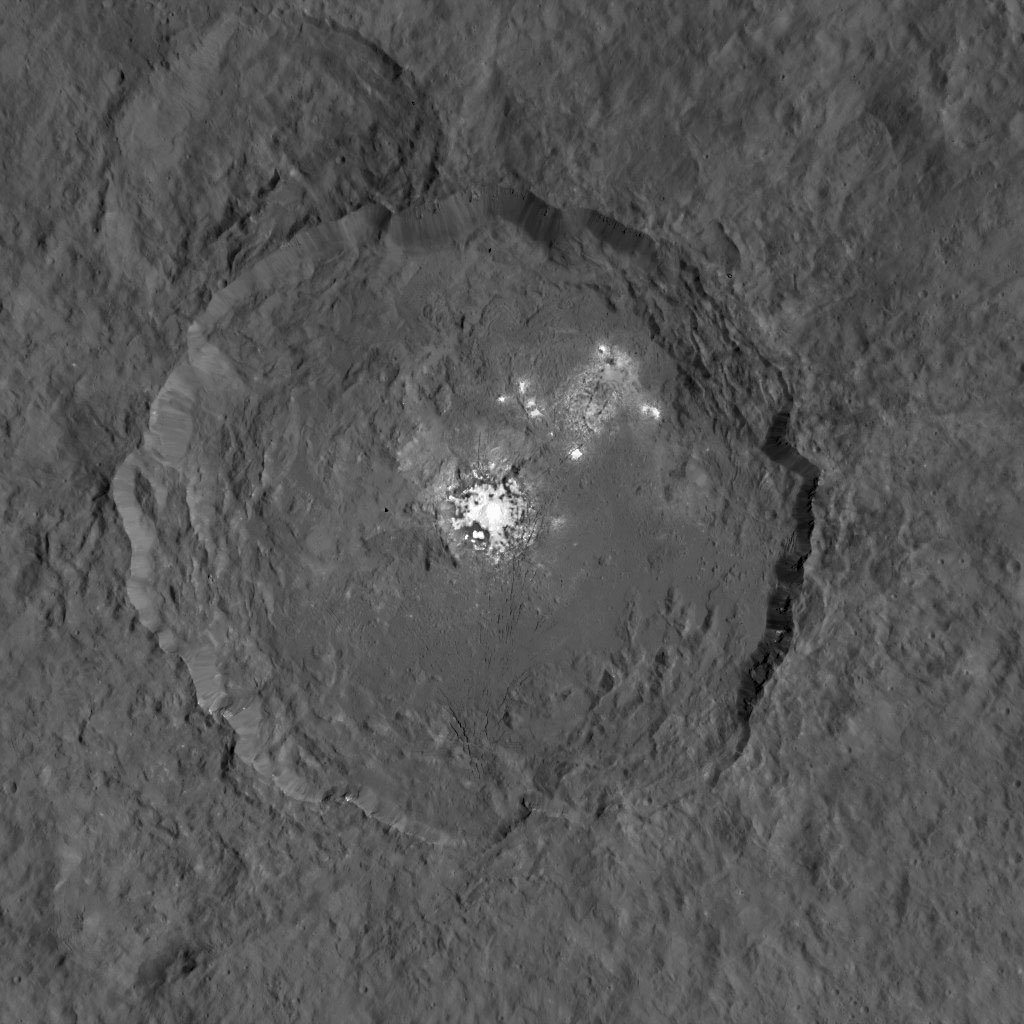
In spring 2015 NASA’s Dawn mission, coming off the back of exploring the asteroid Vesta, entered into orbit around the dwarf planet Ceres and immediately found a puzzle for the space probe to unpick.
As Dawn approached Ceres, which is the largest body in the Asteroid Belt, and began snapping low-resolution images, it quickly became noticeable that one spot on the surface of Ceres was far brighter than all its surroundings. Even after Dawn entered orbit on 6 March 2015 and spiralled closer and closer over the course of the year, answers remained few and far between. The bright spot was revealed to be several groups of bright patches spread between several craters, the largest concentration being found within the 90-kilometre-wide crater Occator.
Contrary to an earlier hypothesis, the bright spots are not quite reflective enough to be water-ice, so scientists’ thoughts have turned to salt deposits as a possible explanation, although if it is salt, then how it ended up on the surface remains a mystery that is going to rumble on into 2016.
Inside the magazine
Our top ten greatest stories of 2015 first appeared in the December edition of Astronomy Now.
Never miss an issue by subscribing to the UK’s biggest and best astronomy magazine. Also available for iPad/iPhone and Android devices.




